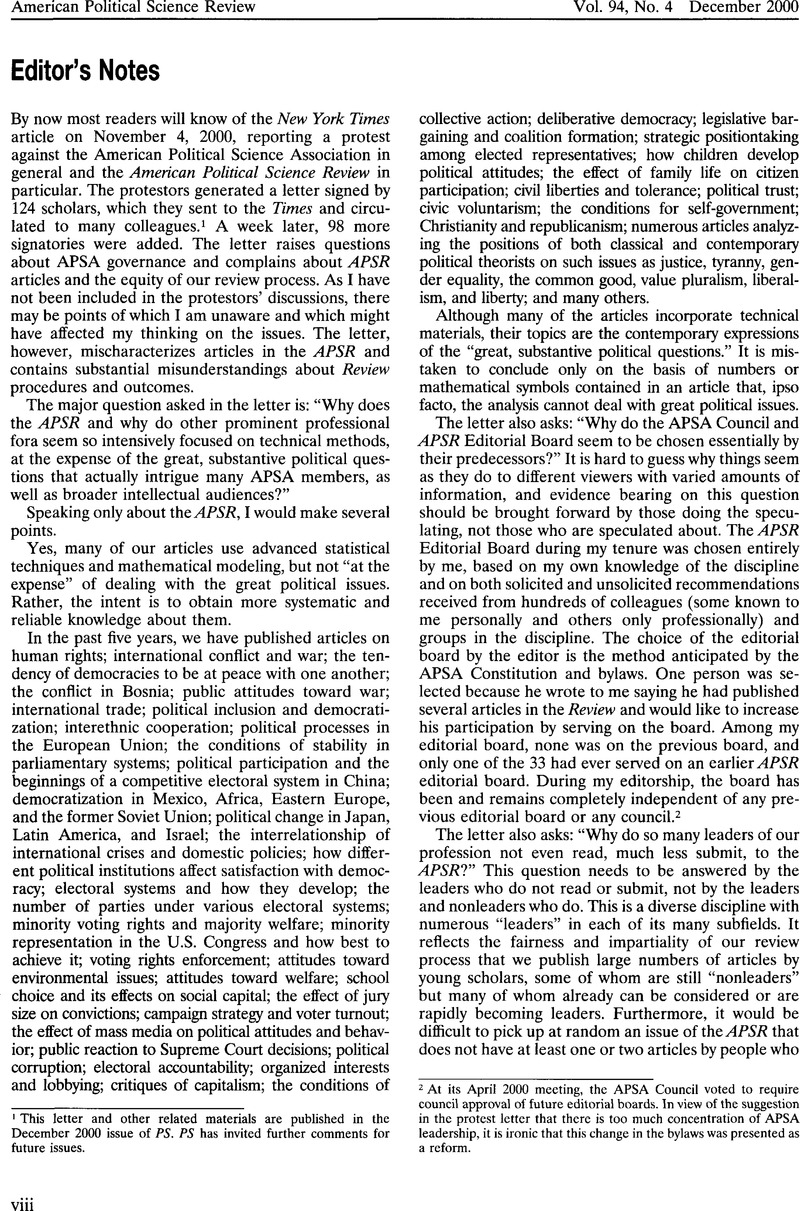No CrossRef data available.
Article contents
Editor's Notes
Published online by Cambridge University Press: 01 August 2014
Abstract

- Type
- Other
- Information
- Copyright
- Copyright © American Political Science Association 2000
References
1 This letter and other related materials are published in the December 2000 issue of PS. PS has invited further comments for future issues.
2 At its April 2000 meeting, the APSA Council voted to require council approval of future editorial boards. In view of the suggestion in the protest letter that there is too much concentration of APSA leadership, it is ironic that this change in the bylaws was presented as a reform.
3 Reported in Table 1 of Epstein, Lee, Caldeira, Gregory, Giles, Micheal, and King, Gary, “Report of the Committee on the Future of the American Journal of Political Science,” 04 14, 2000. http://www.indiana.edu/~mpsa/resources/JournalReport.pdfGoogle Scholar. Accessed November 4, 2000. The ISI ranking presented includes the ten journals with the highest “impact” rates.
4 Thirty-two unsolicited manuscripts were received from 28 individuals; an additional manuscript, invited by the editor as a response to a critique, was submitted by another individual.
5 The overall acceptance rate was recently reported as 10.1% (“American Political Science Review Editor's Report for 1999–2000,” PS 33 [12 2000]: Table 7Google Scholar). Taking into account the new manuscripts received since that report was prepared, our current overall acceptance rate is 9.9%.
6 Of the 222 individuals who signed the letter, 66 are full professors, 24 are holders of endowed chairs, and 8 hold high administrative appointments in research institutes or other academic organizations.
7 The figures exclude manuscripts sent to the one signatory to the letter who is also a member of the APSR Editorial Board.
8 Nevertheless, several signatories to the letter have been extremely cooperative reviewers, reviewing multiple manuscripts without ever declining.
9 These initiatives have been in play for well over a year, and various reports and council actions were posted at the APSA web site long before the 124 sent their letter of protest.



Comments
No Comments have been published for this article.